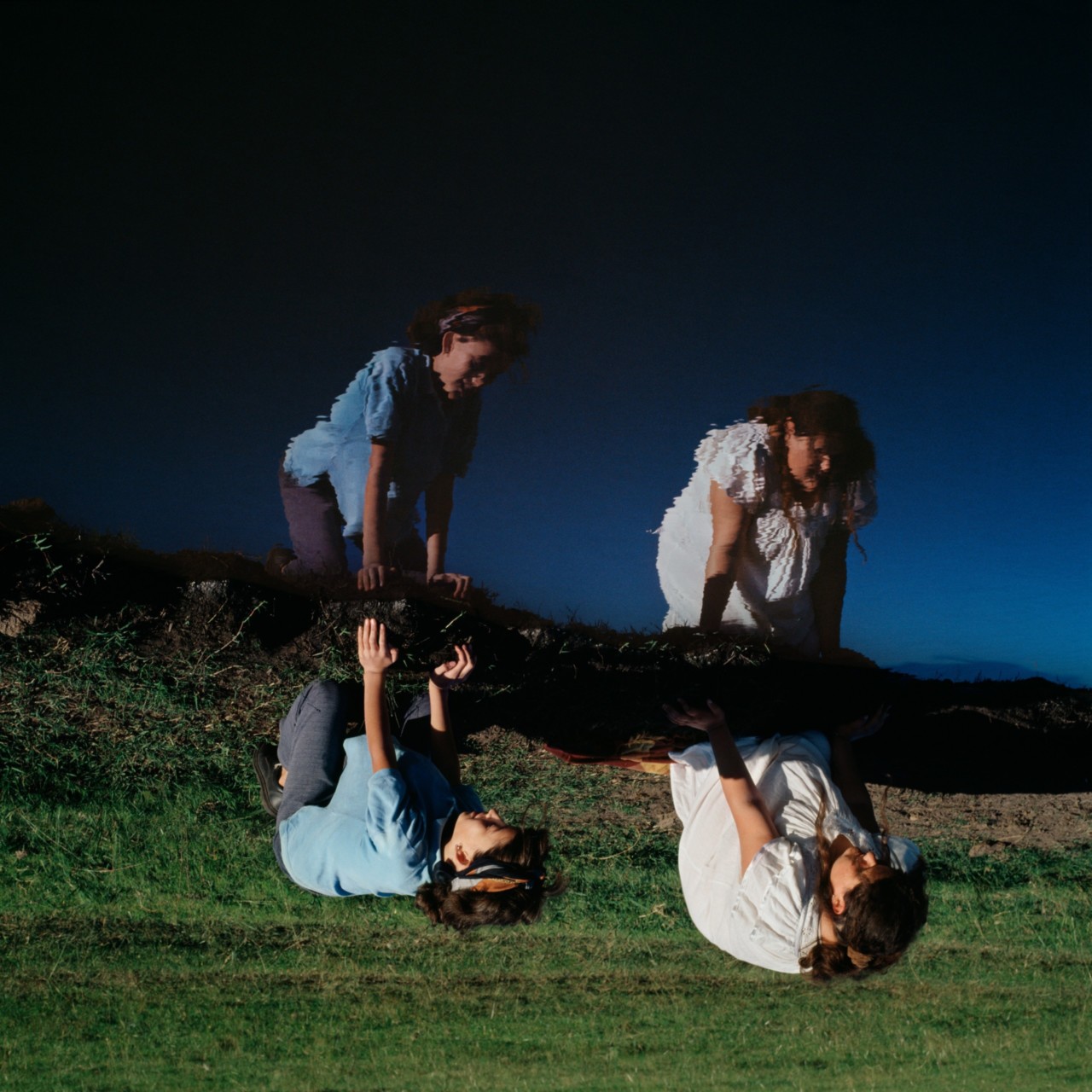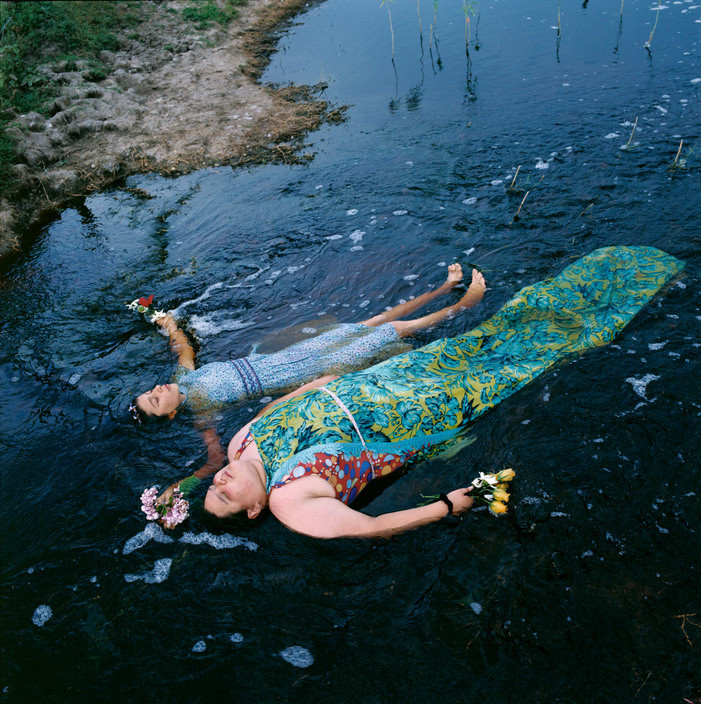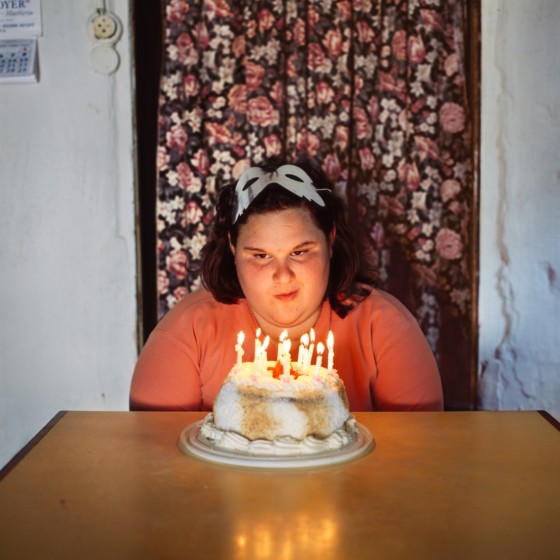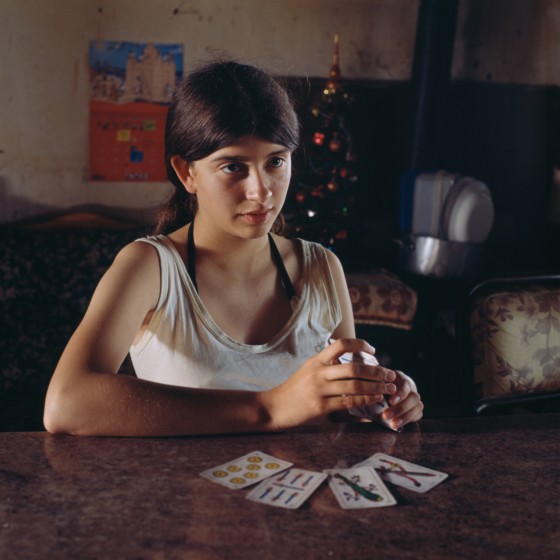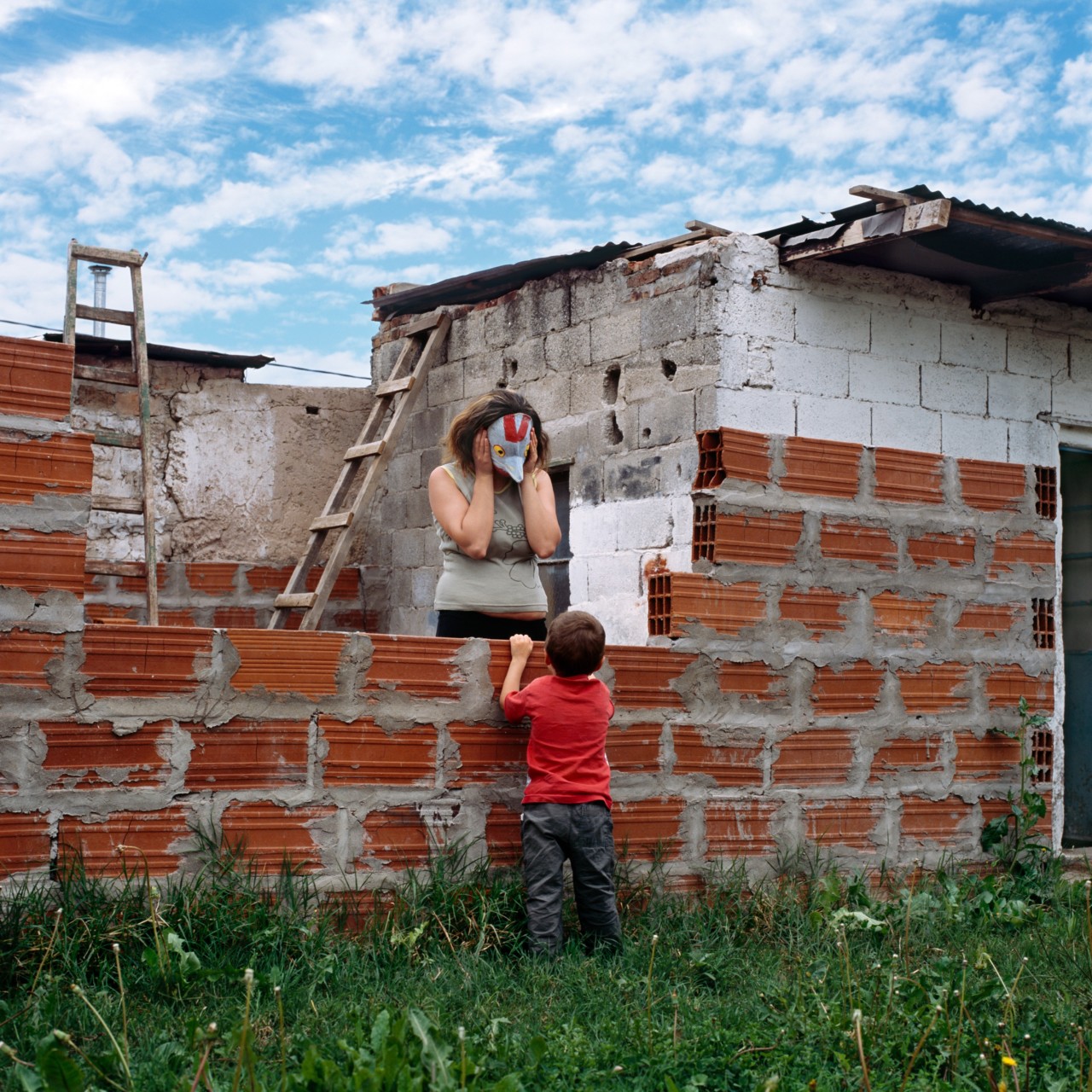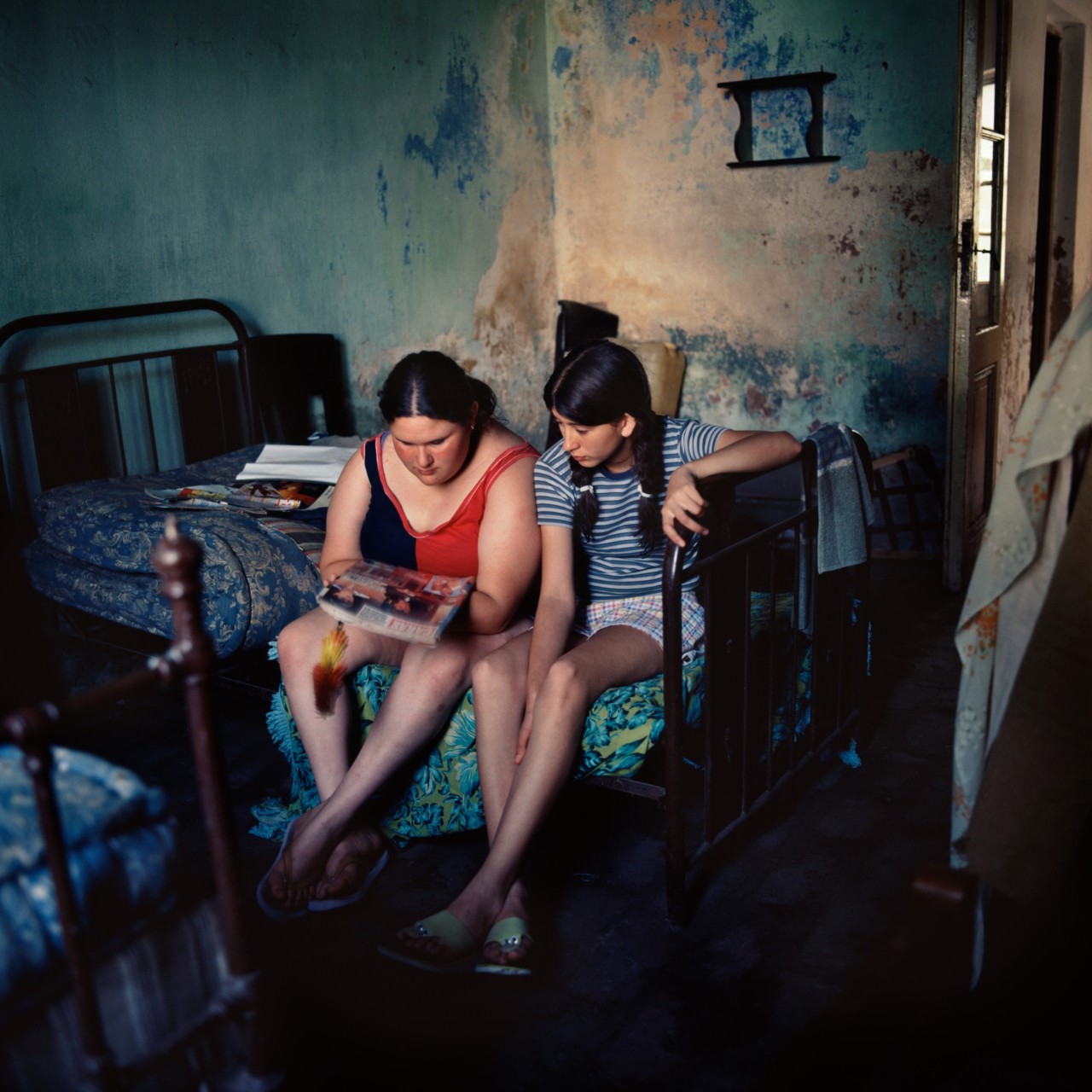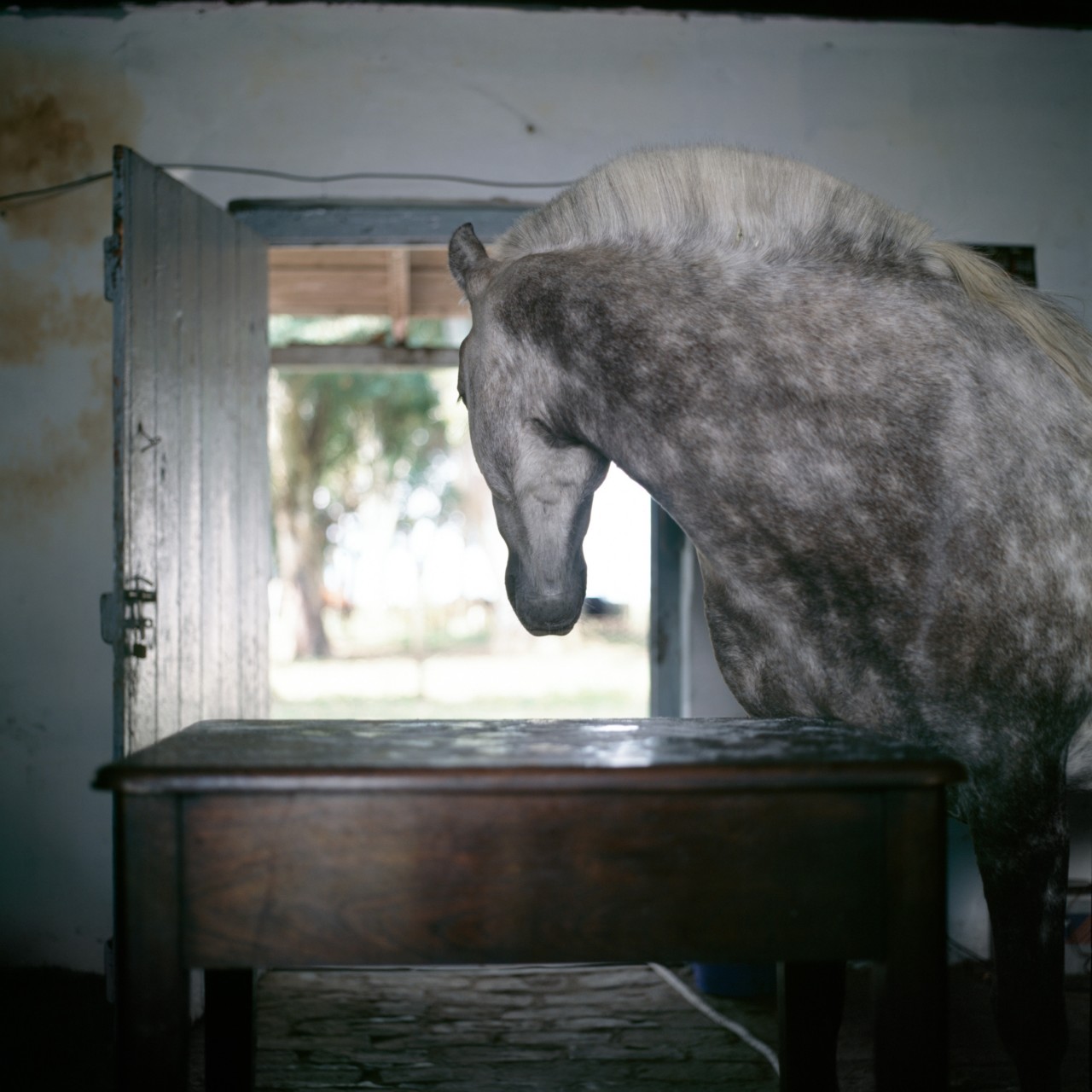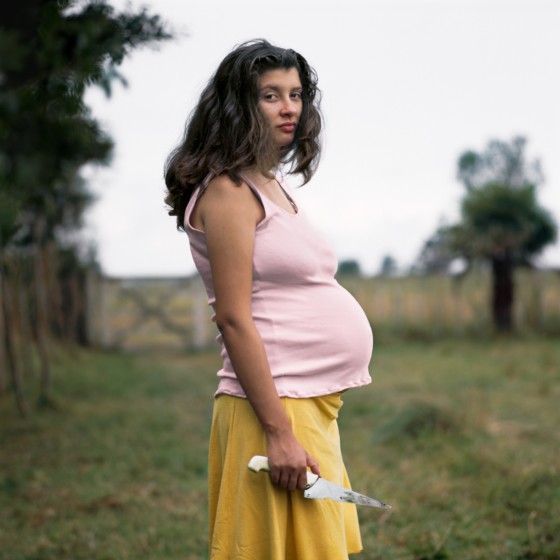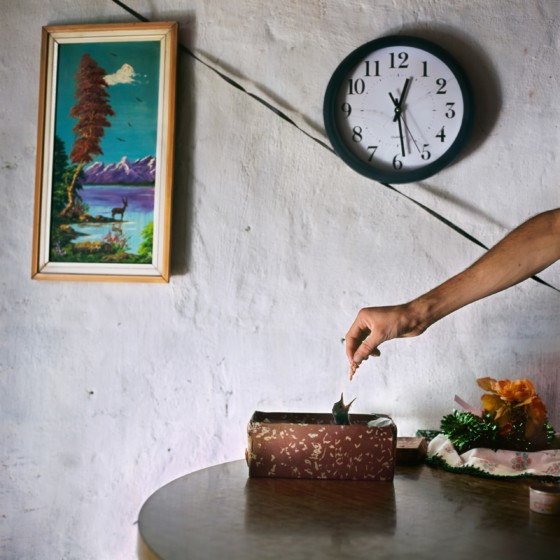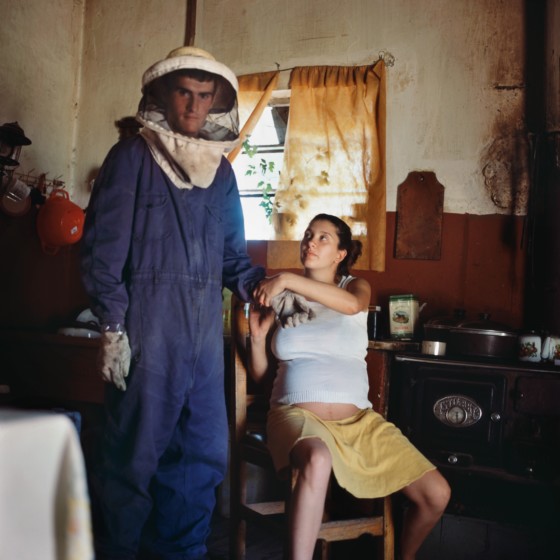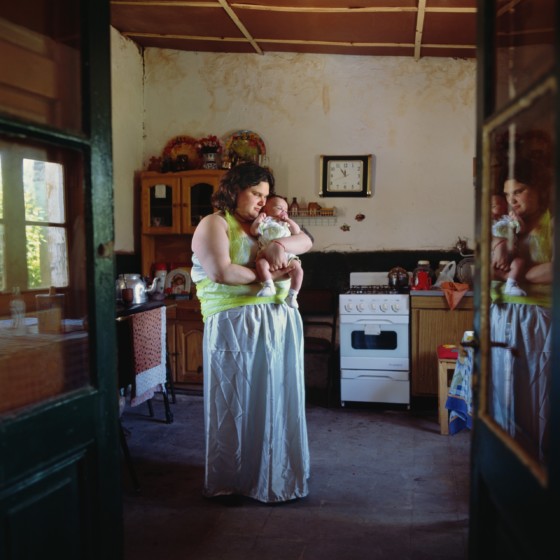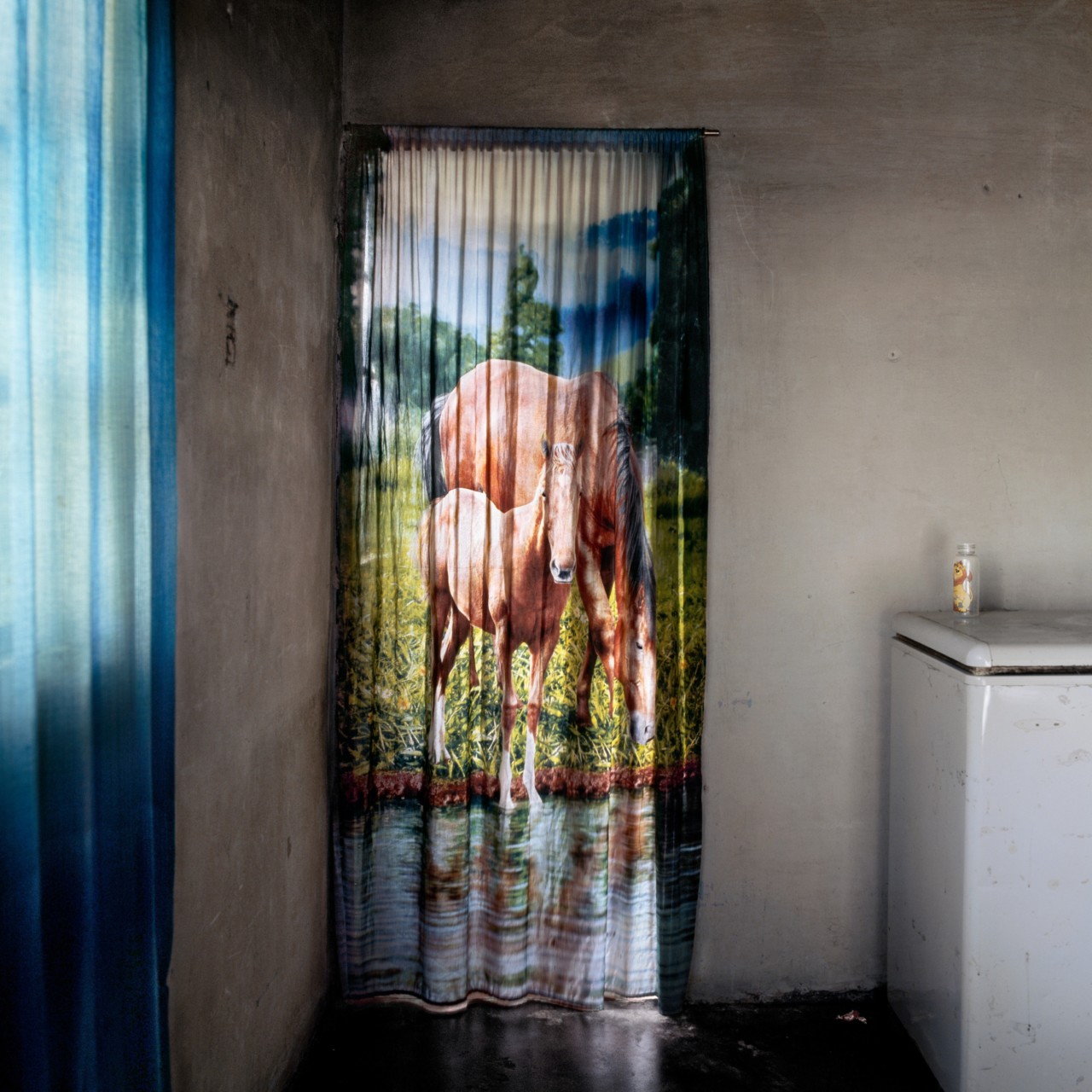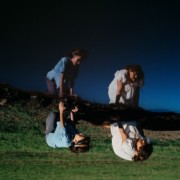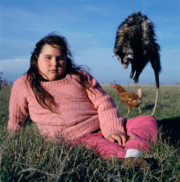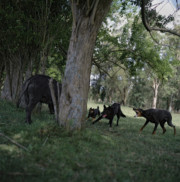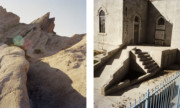The Illusion of an Everlasting Summer
Alessandra Sanguinetti reflects on the fluid territory between adolescence and adulthood, changing alongside her subjects, and how she created the latest chapter of her decades-long project on the lives of her two muses Guille and Belinda
Alessandra Sanguinetti‘s new book, The Adventures of Guille and Belinda and The Illusion of an Everlasting Summer, is published by MACK. Here, Matthew Leifheit – a New York-based photographer, educator, and the editor of photography publication Matte – discusses the work with Sanguinetti, the challenges and rewards of extremely long-term projects, and how a photographer negotiates change in both their subjects and themselves.
Sanguinetti is the recent recipient of a Sundance Institute Documentary Fund grant, being among the fall cohort of grantees announced on October 30, 2020. The photographer will be working to turn 23 years of video footage on the project – a snippet of which you can see at the end of this article – into a film. Learn more about the Sundance documentary grant here.
Signed copies of The Adventures of Guille and Belinda and The Illusion of an Everlasting Summer are available now on the Magnum Shop.
The below image ‘Ophelias’ – from the first book Sanguinetti made with the cousins – is is available now as part of the Magnum Editions Posters collection. You can explore this new, limited edition collectiom in full on the Magnum Shop, here.
In 1999, as she was working on a project picturing the emotional lives of farm animals in rural areas near Buenos Aires, Alessandra Sanguinetti met two nine-year-old girls named Guillermina —or Guille for short — and Belinda. The photographer was then 29 years old, but something in the pair reminded her of the summers she spent as a child in the Argentine countryside, which she refers to as the happiest time of her life. Over the next 21 years — and counting — Guille and Belinda have collaborated with Alessandra on the ongoing series ‘The Adventures of Guille and Belinda’, a documentary pageant about time and the change it brings. The series shows the changing relationship between these girls, changes in their relationship to the camera, and changes in the photographer’s relationship to her craft. Ultimately, it shows change in the relationship between these women and the world at large. Sanguinetti pays special attention to the evolution of themes like play and performance, girlhood, love, family, and animals, all mirrored by the landscape and laced with intermittent visions of the future.
The first book of the series was published in 2010 by Nazraeli Press, spanning late childhood through late teendom. Titled The Adventures of Guille and Belinda and The Enigmatic Meaning of Their Dreams, the project saw Guille and Belinda enact precocious tableaux of weddings and even pregnancy in anticipation of their adult lives. In the second installment, published by MACK this fall, The Illusion of an Everlasting Summer, these scenes come to pass and take form as a natural extension of the first publication.
Vastly different from Sanguinetti’s photographs of her own family, the series is more like a fairy tale than a family album. But because her medium is photography, the work is inevitably both. Through the tenderness of Sanguinetti’s attention and the generosity of these women, it is possible for anyone to sit in a library and have an experience usually reserved for the most intimate of family gatherings: to feel closer to what came before, to exist intimately with history, and to dream of how the future might look.
On the occasion of the release of the second volume of The Adventures of Guille and Belinda, I spoke with Sanguinetti about change.
Matthew Leifheit: I have your 2013 book, Sorry Welcome, published by TBW. That’s far more diaristic – it’s pictures of your daily life and your family. Looking at your work with Guille and Belinda in relation to that, it seems so different.
Alessandra Sanguinetti: I began this work on Guille and Belinda when I was 28. Since then, my way of working, of making photographs, has changed vastly. It’s partly a result of what I have been able to learn about my practice over time, but also a natural consequence of changes that have occurred in my life. So hopefully, in that respect, as I go on and I continue working with Guille and Belli, the project can reflect transitions in my life and in my practice, just as they reflect the transitions in their lives.
I think that this process of change over time was also something of a source of conflict when it came to trying to put the book together over these last few years. I guess I had a hard time because I was working with older images and a different way of photographing than I had in previous years. So I had a sense that I needed to adjust to that, or accept it.
This is exactly what I wanted to ask about actually. One of the great powers of photography is showing change over time. And this body of work is so much involved with the passage of time. I wanted to ask about change in the many senses that it’s occurring in this work.
My relationship with Guille and Belinda has changed as they have grown older, and as I myself have grown older. I was 28; they were nine at the time, and now they’re 30. When they reached adolescence, I was still seeing them as little kids, so it took me a second to adjust. I kept expecting them to play, to jump around, to get excited when they saw me. And then suddenly, they weren’t that excited to see me, they weren’t excited to play. They became more self-conscious. As children, Guille and Belinda didn’t pay attention to where they lived, how they were dressed, what image my work could be presenting of them. As they got older, that feeling of awareness came more and more into play, which changed them. After that, they became mothers, and Belli became a more private person, who had a shy husband. I had to learn to adjust to all of those changes while making this work.
Every year, I would be a different person as well, and that would affect our relationship. In that respect it’s a relationship just like any other; the difference being that this is a photographic relationship. I always have a camera when I’m with them, and they expect me to have it. But lately, I haven’t used it much. I’ve been spending more and more time with them without taking pictures. I just want to get to know them again, because they’re adult now. I have realized that I have to slow down and just be there, with them.
I myself never attempted any kind of project as long as this, but it seems to me that, over time, you may have already gotten the images that come most naturally or easily. And that also in addition to your relationship changing, there’s sort of a greater challenge to make something that’s surprising to you, or new. Did you feel that at all?
Oh yeah… The fear of repeating myself, I think a lot of photographers or artists go through that: the fear of making the same pictures over and over again. On some level, that’s fine. There is a tendency for the art we make to revisit the same concerns via different forms. But at one point, I did notice that I was repeating things, or I was just trying to get a good picture. And I know that if I’m just trying to get a good picture, I should stop, because I’m not growing; not learning anything.
I don’t see any point in shooting and making work if I already know what I’m going to get and there’s no process of discovery.
"Guille and Belli, they're extraordinary, but so is everybody else. It just depends who's paying attention and how they're paying attention"
- Alessandra Sanguinetti
I would like to believe is that you could examine any subject and it would be fascinating if you looked at it the right way; that the photograph, and the way that the photographer is looking at a subject, could be enough most of the time. What I want to ask is, do you think there are these magical, hidden worlds, like these two people have— that exist everywhere and are being kind of overlooked and unexamined in the everyday— or is this something singular, that you stumbled onto?
It’s all about paying attention. Guille and Belli, they’re extraordinary, but so is everybody else. It just depends who’s paying attention and how they’re paying attention.
And why was this subject sort of perfect for you?
It was mostly a product of serendipity. I was living in Argentina and as a kid, I spent my childhood summers on the farm, and it was the happiest time of my life, so I think I was always wanting to go back to that. And when I was working around that area, taking pictures of animals for On the Sixth Day, there they were – Guille and Belli. They were the granddaughters of a woman I used to spend time with. I just started paying attention to them, and focusing my energies on them, more and more and more, until it took shape as this body of work. But I never thought, “Oh, I’m going to find two girls.” It’s not that I was trying to divine or cultivate a subject. The subject was in my life.
That said, I am often preoccupied by the thought that, in the farmlands there, it’s really flat topographically. Really flat. No hills, nothing, and there are just little clumps of trees now and then, and long dirt roads. If you went by there, and passed where they live now or where they lived when they were little, you would have seen these two little scrawny kids just in the distance and that would have been it. Just two little kids in the country.
But if you stop, and you get out of the car and you talk to them, and you listen and you hang around and you ask questions, then suddenly, you glimpse this whole vast universe. And I think that’s the case with most people, most places.
"In classic stories, everything is always about men; men who are venerated; who have really nice clothes to wear when they go to special events. And the women? Not at all. So, I was thinking of the work sort of as a counterpoint ballad to that novel"
- Alessandra Sanguinetti
Are there other long-term photographic projects you were inspired by?
Usually when I’m in the middle of work, I don’t look at other people’s work because I’m wary it means I’ll lose my track. When I’m starting a project, if somebody says, “Oh, you’re doing work about that? Oh, you should look at this, this and that,” I think, “No, I’m not going to look at anything that is remotely similar to what I want to do.” Because then I’m just going to wonder, “Why do it?”
If I think back to when I began pursuing this work in particular, I think of Graham Greene, because I was reading a lot of his novels. I was also listening to T.S. Eliot constantly in the car, reading his own stuff. There’s no obvious connection to that in the work, but I know that that period of reading and listening set me into a certain kind of mood.
And then there’s an Argentine folk singer: Atahualpa Yupanqui. And along with this, my mom had tons of old Vogue magazines in the farm, and I would tear up pages and show them to the girls. My mom also had coffee table books, classic tomes on Caravaggio, or books about the Renaissance. So, I would take some pictures to the girls and say, “Wouldn’t it be fun to play with this?” Those were my influences when I was making the project.
I also have a ton of videos of Guille and Belinda; around 50 hours of video that I shot while I was taking the pictures. I’m currently working to put it together. That got me thinking of the material in a different way than I had been for the first book. I don’t know if you know much about Argentina, but there’s this epic-gaucho poem called Martín Fierro [by José Hernández]. That text in particular came to my mind while working on the video material.
Gauchos are the equivalent to cowboys [in the United States]. Martín Fierro was written almost a century and a half ago. In the story, the hero is a guy— a gaucho— and the tale is all about men in the countryside. In classic stories, everything is always about men; men who are venerated; who have really nice clothes to wear when they go to special events. And the women? Not at all. So, I was thinking of the work sort of as a counterpoint ballad to that novel.
"When they got a little older, I began to feel awkward, because they seemed more adult than me. I was going to see them and making pictures, which is nothing useful— it's not a real job"
- Alessandra Sanguinetti
Do you think that a man would have been able to make this project?
No. And thankfully not. For the moment, we don’t need more men telling the stories of women.
I just think about what made these girls trust you? Is it the long period of time? And why should they give you so much access to their lives?
Well, they trusted me at first because I already had a relationship with the grandmother. I was known in the area for going around with my camera because, at that time, I was shooting a lot of events like rodeos, or slaughters, or births. So everybody knew around there. I was just the girl, Alessandra. I didn’t appear from out of the blue. The parents trusted me.
And I also think that I’ve always been kind of immature. I have a hard time talking to adults, but I’m fine talking to kids. So when I was with them, our relationship came instinctively.
When they got a little older, I began to feel awkward, because they seemed more adult than me. I was going to see them and making pictures, which is nothing useful— it’s not a real job. At a certain stage, they already had more ‘grown-up’ jobs than I had.
I felt very comfortable with the two of them when they were young. I just adored them, and I would jokingly get on my knees and beg for them to let me take another picture. I felt like I was another kid around them; I identified with them a great deal and was probably nostalgic for my own childhood.
"I always thought Belinda never really cared that much, but once, her mom showed me that, in a drawer in her night table, she had kept all of the articles and all the prints I had given her, as well as one of the books, all together, and all really well cared-for"
- Alessandra Sanguinetti
When I’m looking at the images, there’s never a question of whether these people are willingly or complicitly participating, but I wonder how they feel about looking at the pictures of themselves and their relationship.
It changed over time, but they never did anything they didn’t want to do. As soon as they were tired, or there was something they were uncomfortable with, they would tell me. My relationship with them was kind of like that of an aunt, if I think about it.
But how did they feel about the pictures? When they were little, I would bring back prints and they didn’t care because, for them, the fun part was the process of shooting, and the play in front of the camera. Looking at the prints wasn’t important for them. They would just fold them up and put them in their pocket. Then as they got older, they started appreciating these records of their lives more.
I always thought Belinda never really cared that much, but once, her mom showed me that, in a drawer in her night table, she had kept all of the articles and all the prints I had given her, as well as one of the books, all together, and all really well cared-for.
Guille loves the work. She’s a teacher… an intellectual; she thinks about how the work exists in the world and sees its value as a document and all that. So, similarly, she appreciates it on that level.
I actually had a video call with them two days ago, which I never usually have because Belinda doesn’t have a great internet connection. It was really hard to get her to a computer. The call was really nice, because I got the chance to ask them some questions that other people had asked of me, that I had been wondering about. I admitted to them that I had felt nervous when I finished the book, because I didn’t know if they would have problems with any of the images. There were a few in particular: an image of Guille’s belly after her caesarean, and some other intimate things like that. After I told them how I felt, they said, “No, no, we love it.” Belinda said, “I just wish there was a picture of our moms together.” She said that that was what was missing for her.


